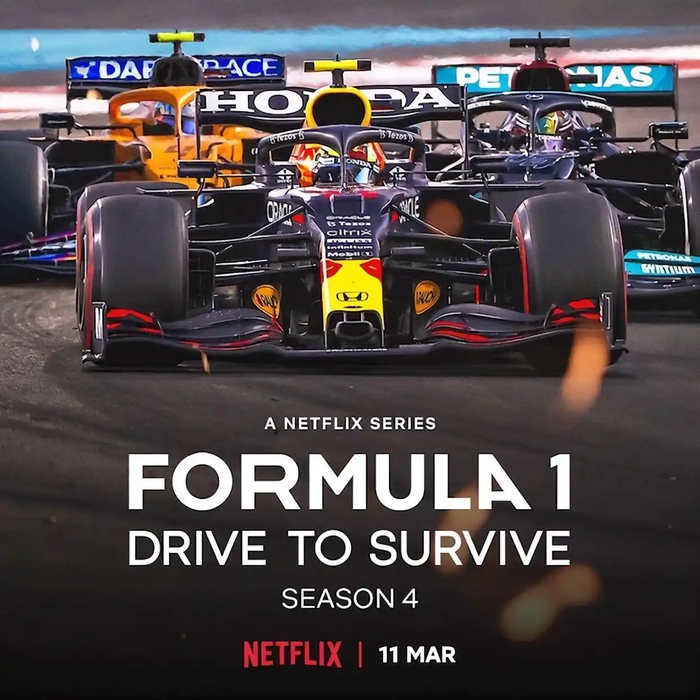The F1-China partnership is shifting into an even higher gear—driven by mutual ambition and the power of visibility.

Fan festival at the Bond during F1 Chinese Grand Prix. Photo from CFP
by Qin Siyue
At an upscale concept store in Shanghai’s Taikoo Hui mall, George Russell of the Mercedes-AMG Petronas F1 Team stood alongside his young teammate Kimi Antonelli, greeting fans and sponsors with an easy smile. The Australian Grand Prix had wrapped just days ago, but the pair showed no signs of jet lag as they fronted a brand event for IWC Schaffhausen.

Speaking with Jiemian News, Russell shared that he doesn’t find the back-to-back schedule particularly challenging—years of racing have trained him to adjust quickly between race weekends.
They weren’t the only F1 stars in town. Max Verstappen appeared at an ExxonMobil event alongside actor Daniel Wu, while Charles Leclerc popped up at a PUMA store and Fernando Alonso visited the BOSS flagship in Jing’an. Across the city, F1 drivers were out in full force, kicking off race week not with track time—but with sponsor appearances.

It’s a rhythm that’s unique to Formula 1. Drivers routinely frontload their schedules with media duties and brand activations. In a sport where sponsorships form the backbone of revenue, showing up is part of the job.
F1 today is as much a commercial powerhouse as it is a sporting event. In 2024, the sport generated $3.65 billion in total revenue, up from $3.22 billion the previous year, with operating profit rising to $774 million. Its business engine runs on three primary revenue streams: media rights, race hosting fees, and sponsorships—together accounting for about 80 percent of its income. The sport’s financial performance has steadily improved, with both revenue and profit climbing year over year.
At the heart of F1’s structure is the Concorde Agreement, a decade-long contract that governs the sport’s operations. It outlines the division of power and revenue: the FIA oversees regulation and licensing; F1’s management handles media rights and event fees; and teams earn prize money based on performance while securing their own sponsors. That’s why, before hitting the track, drivers often debut each race weekend at brand events representing their teams.
Since Liberty Media took over in 2017, F1 has rebranded itself for the modern era. A new logo, the Drive to Survive Netflix series, and a shift toward more competitive racing have attracted younger, global audiences. Brands are taking note, chasing the worldwide exposure F1 offers across 24 race weekends.

According to a source familiar with F1’s commercial strategy who spoke with Jiemian News, the organization is highly attuned to sponsor needs. All partners—whether global, official, or suppliers—are granted category exclusivity, a policy that increases satisfaction and encourages long-term commitments.
China has always been central to F1’s ambitions. Liberty Media quickly secured broadcast deals with CCTV and Tencent to amplify reach. That bet paid off—audiences surged after F1 returned to national TV in 2018.
The growing popularity of F1—and its drivers—was on full display in Shanghai. When George Russell landed in the city, he was surprised to learn from an airport staffer that a crowd of several hundred fans had gathered to welcome him. His teammate Kimi Antonelli, who had arrived a day earlier, spent time sightseeing and was recognized by Chinese fans in multiple spots around the city. For the young Italian driver, the warm reception was unexpected but exciting, and he expressed hope that the Chinese F1 fan community would continue to expand.”
That enthusiasm was only further fueled by the debut of Zhou Guanyu in 2022, China’s first full-time F1 driver. He quickly drew top-tier sponsorships from Sinopec, NIO, and Lululemon. His team, Sauber, benefited too—adding a roster of Chinese partners like Yili's AMX and SenseTime.

Though Zhou is now Ferrari’s reserve driver, paired with stars Lewis Hamilton and Leclerc, he remains a marquee name for the Chinese market. Lenovo, now an F1 global partner, says the decision to deepen its sponsorship was driven by the sport’s technological demands and international scale.
Yao Zhenyu, Vice President of Lenovo Group, told Jiemian News that beyond providing hardware like computers, Lenovo’s partnership with F1 underscores its broader technological ambition. With F1's global footprint and high data demands, the company sees a unique chance to demonstrate its AI capabilities. “The 180+ broadcast regions, 500TB of data transferred each race weekend, and over 500 hours of live coverage throughout the season all represent areas where Lenovo’s technology can play a key role,” he said.
Meanwhile, local promoter Juss Sports recently extended the China Grand Prix deal through 2030. Despite limited revenue streams—primarily from ticket sales and commercial booths—the Shanghai race continues to draw large crowds.
The 2024 edition saw new grandstands added, with attendance projected to rise by nearly 20,000. According to the 2024 Shanghai Sports Impact Evaluation Report, the race is expected to generate 1.406 billion yuan in direct economic impact, with a total output effect of 3.928 billion yuan and 137 million yuan in tax revenue.
“Every sport needs both iconic figures and grassroots support. After enough local participation, new stars will emerge,” said Zhang Yan, former world formula champion and co-founder of RS Track. “Renewing the China Grand Prix signals that motorsport in China is on a healthy growth trajectory.”
With fan numbers growing 39% year-on-year, according to Nielsen, China is now one of F1’s fastest-expanding markets. From the inaugural 2004 race to Zhou Guanyu’s rise, the F1-China partnership is shifting into an even higher gear—driven by mutual ambition and the power of visibility.